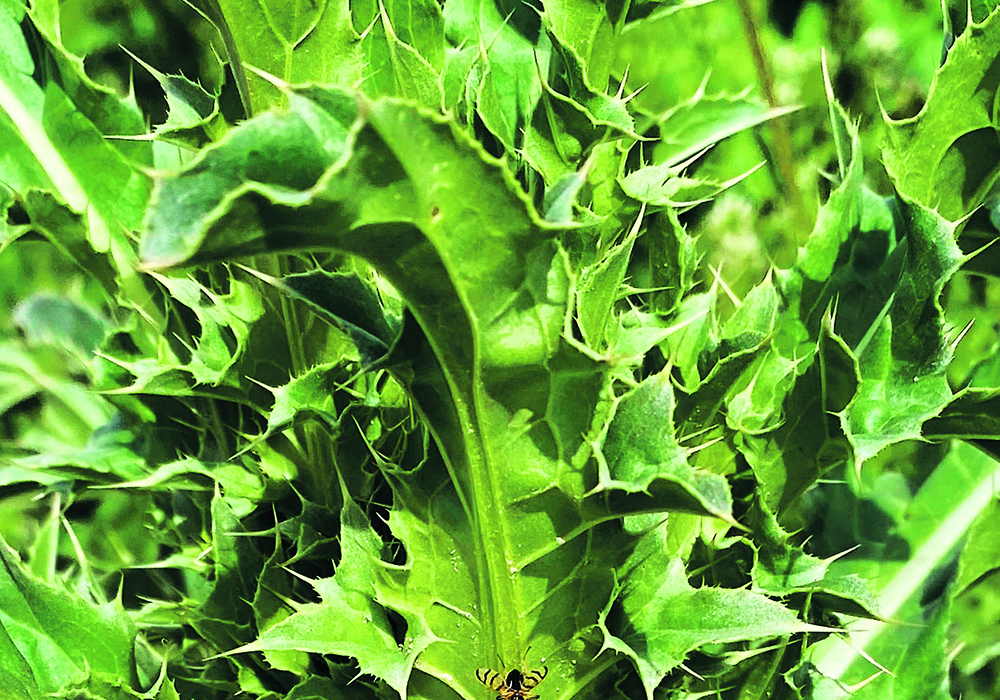Creeping thistle, as it is known in some parts of Europe, is best known on the Prairies as the perennial Canada thistle.
This unwelcome European immigrant makes its way through the fields of western Canada by seed and root.
Thistle patches might start from a seed, but the colonies often form from root buds that spread up to five metres from the parent plant.
Canada thistle can resist drought by sending down roots as deep as three metres in search of water and nutrients.
Read Also

Equipment manufacturing may return to Canada
Some ag equipment and automotive manufacturers are now adjusting their production and distribution to avoid tariff costs in relation to supplying the Canadian market.
Plants grow as high as 1.5 metres and sprout flowers that are often purple but can also be pink or white.
The tufted, airborne seeds generally germinate within a year but are capable of lying dormant, buried in soil for up to 20 years, waiting for a tillage operation that will bring them to the surface.
Black summerfallow was the old-fashioned cure for Canada thistle. In the days before reduced tillage, the pests would hang around field edges, fence lines and ditches, where the steel didn’t reach.
Cultivation should begin in fall with multiple passes that prevent the plants from growing more than five to eight centimetres tall. Plants that are allowed to develop beyond this height will replenish their energy stores in their roots and survive the winter. The plant is most vulnerable to control during the early bud stage.
It is at this stage that chemicals have the greatest impact and can be used in combination with tillage. A variety of broadleaf herbicides can provide top growth suppression.
Mowing or chemical suppression can keep the plants small through the growing season. A fall application of glyphosate would then effectively starve the plant over the winter.
Applications of dicamba with mecoprop, DyVel DSp, or dicamba with MCPA can be effective. Higher rates of 2,4-D or mixes of clopyralid and imazethapyr, Lontrel and Odyssey, provide longer term control in the soil but can also affect timing of the following crop.
Curtail, clopyralid and MCPA can be used for season long control in barley, oats, spring wheat, canary-seed, flax and timothy hay. The weed will likely show signs of growth in fall and can then be killed with an application of glyphosate.
Prestige, fluroxypyr, clopyralid and MCPA are effective in spring cereals, grasses and timothy.
Thifensulfuron and tribenuron, Refine SG, Deploy or Nimble, is another combination used in most cereals and some grasses. A variety of tank mixes can be used with this combination. Refine SG is registered for aerial applications.
Other products are also registered for suppression. Tordon 22K, picloram, on its own or with 2,4-D, Grazon are used, as is a mix of 2,4-D and aminopyralid, Restore, for control in pasture.














